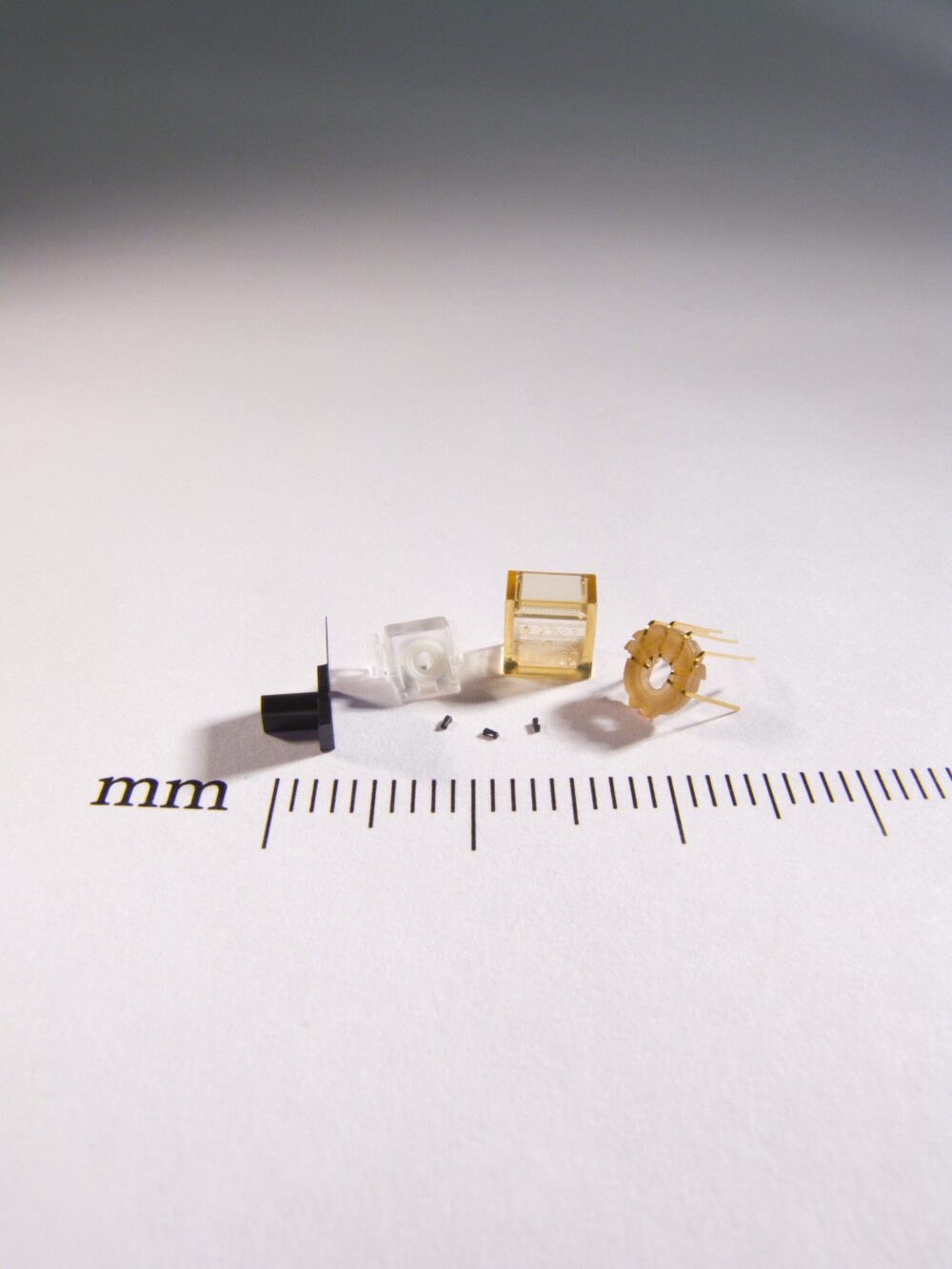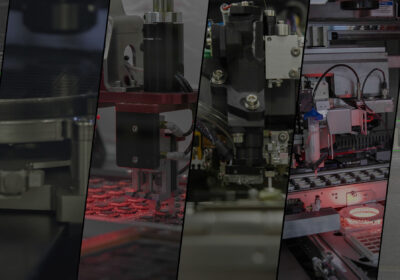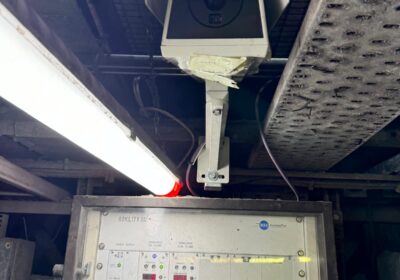Brett Saddoris, Technical Marketing Manager, Accumold
Achieving tight tolerances in micro molding is a complex process that requires careful attention to every stage of production, from design through to assembly. The precision required for micro molded components, often used in industries such as medical devices, electronics, and micro-mechanical systems, demands a level of control that extends far beyond traditional manufacturing techniques. Tolerances, measured in micrometers, are crucial for ensuring the functionality, performance, and quality of these components. Success in this field relies on expertise in several key areas: design, material selection, the molding process itself, tool making, validation and metrology, and automated assembly. Moreover, vertical integration, where a single company controls all stages of production, offers a significant advantage in maintaining tight tolerances.
DESIGN ISSUES
The journey toward precision in micro molding begins with the design phase. Micro molding demands a unique approach to design, as the limitations and capabilities of the process must be considered from the outset. Traditional design principles cannot always be directly applied to micro molding, which necessitates specific adjustments to ensure the manufacturability of the part without compromising on precision. For example, plastic materials shrink as they cool, and this shrinkage can vary based on the polymer type and part geometry. In micro molding, even a minute variation in shrinkage can lead to significant deviations in tolerance. Therefore, accurate modeling and compensation for shrinkage are critical during the design phase.
Another challenge lies in maintaining consistent wall thickness, which is essential for achieving dimensional stability. Variations in wall thickness can cause non-uniform cooling, leading to inconsistent shrinkage and resulting in tolerance issues. The intricate nature of micro-molded parts, which often include features such as micro-channels or fine ribs, also requires precise attention during design. Even tight radii must be crafted with care to ensure that the mold can replicate these features without introducing dimensional inaccuracies. Draft angles, used to facilitate part ejection from the mold, must be carefully calculated to avoid warping, while avoiding complex undercuts can help reduce the likelihood of tolerance issues during the molding process.
MATERIALS
The material chosen for micro molding plays a pivotal role in ensuring that the final part meets the desired tolerances. Different polymers exhibit varying degrees of shrinkage, flow characteristics, and mechanical properties, all of which impact the ability to achieve precision. High-performance thermoplastics like PEEK and liquid crystal polymers (LCP) are often preferred for their superior dimensional stability. The ability of these materials to maintain their dimensions under stress and during temperature fluctuations makes them ideal for micro-molded parts where tolerances are crucial.
Material flow is another important factor to consider. In micro molding, the plastic must flow into very small, often complex mold cavities. Materials with high flowability are essential to ensure that every detail of the mold cavity is filled, preventing defects such as short shots or incomplete features. Additives like glass or carbon fibers may also be incorporated to enhance material strength or thermal properties, though these can also affect flow and shrinkage behavior. A thorough understanding of the material’s characteristics is crucial, and this is where vertical integration proves beneficial. In-house material science expertise allows for tailored material selection and optimization that aligns with both the design and the specific requirements of the micro molding process.
MOLDING
The molding process itself presents its own set of challenges in maintaining tight tolerances. Achieving the necessary precision in micro molding requires specialized machinery capable of controlling parameters such as injection speed, pressure, and temperature with extreme accuracy. Small deviations in these parameters can result in significant changes in part dimensions. For instance, if injection speed is too high or too low, it can affect how the material fills the mold, potentially leading to defects that affect tolerance. Similarly, maintaining consistent temperatures throughout the process is critical to avoid issues such as warping, shrinkage, or other dimensional inaccuracies.
Optimizing cycle time is also important in the micro molding process. While shorter cycle times are often pursued for efficiency, in micro molding, cooling time is particularly important to ensure that the part cools evenly and maintains its shape. Too short a cycle time can lead to parts being ejected from the mold before they have fully cooled, resulting in warping or dimensional inaccuracies.
TOOLING
Tool making, or mold fabrication, is another critical factor in achieving precise tolerances. The mold itself must be manufactured to extremely tight tolerances because even the smallest deviation can result in an out-of-spec part. Micro molds often have intricate features, and maintaining consistency across all cavities within a multi-cavity mold is crucial for uniform part production. High-precision machining techniques such as electrical discharge machining (EDM) and CNC milling are used to create the intricate details required for micro molds. Cooling channels within the mold must also be carefully designed to ensure even temperature distribution, as uneven cooling can lead to shrinkage issues that impact tolerances.
Vertical integration again proves advantageous in the context of tool making. A vertically integrated micro molder with in-house tooling capabilities can maintain tighter control over the mold-making process, ensuring that the tool is optimized for both the design and material requirements. This approach minimizes the risk of errors and ensures that the mold is capable of producing parts with the desired tolerances.

VALIDATION
Once the parts are produced, validation and metrology play a crucial role in ensuring that they meet the required specifications. Advanced metrology techniques are needed to accurately measure micro-molded components, given their small size and intricate features. Traditional measurement tools are often insufficient for this task. Coordinate measuring machines (CMMs) and optical inspection systems are commonly used to verify the dimensions of micro parts with high precision. Micro computed tomography (Micro-CT) is another tool that allows for both external and internal features to be measured without damaging the part, which is especially useful for components with complex geometries.
The ability to validate part dimensions with precision is a key part of the micro molding process, and a vertically integrated molder will typically have dedicated metrology departments equipped with cutting-edge technology. This in-house capability allows for continuous quality control throughout the production process, identifying potential issues early and ensuring that parts remain within tolerance from the first to the last batch.
ASSEMBLY
For many micro-molded parts, tight tolerances must be maintained not only through the molding process but also during assembly, where these components are integrated into larger systems. Automated assembly processes are often necessary to ensure that these delicate parts are handled with the required precision. Human error in assembly can introduce variability that affects tolerances, making automation an important aspect of maintaining consistency. Automated systems equipped with vision-guided robots or alignment tools can handle the delicate nature of micro parts, ensuring that they are placed and aligned correctly during the assembly process.
In this regard, vertical integration once again plays a key role. A micro molder with in-house automated assembly capabilities can streamline the process, ensuring that tolerances are maintained from the initial molding stage through to final assembly. This end-to-end control is a significant advantage when dealing with micro-molded parts, where even minor deviations can lead to significant issues in performance and functionality.
SUMMARY
Achieving tight tolerances in micro molding is a multifaceted challenge that requires expertise in design, material selection, molding process control, tool making, validation, and automated assembly. Vertical integration offers a distinct advantage by allowing for seamless coordination between each of these stages. By controlling every aspect of the production process, from design to final assembly, vertically integrated micro molders can ensure that tight tolerances are consistently met, providing their clients with high-quality, precision-engineered components. This holistic approach not only enhances efficiency but also ensures that the final product meets the exacting standards required in industries that rely on micro molding.








